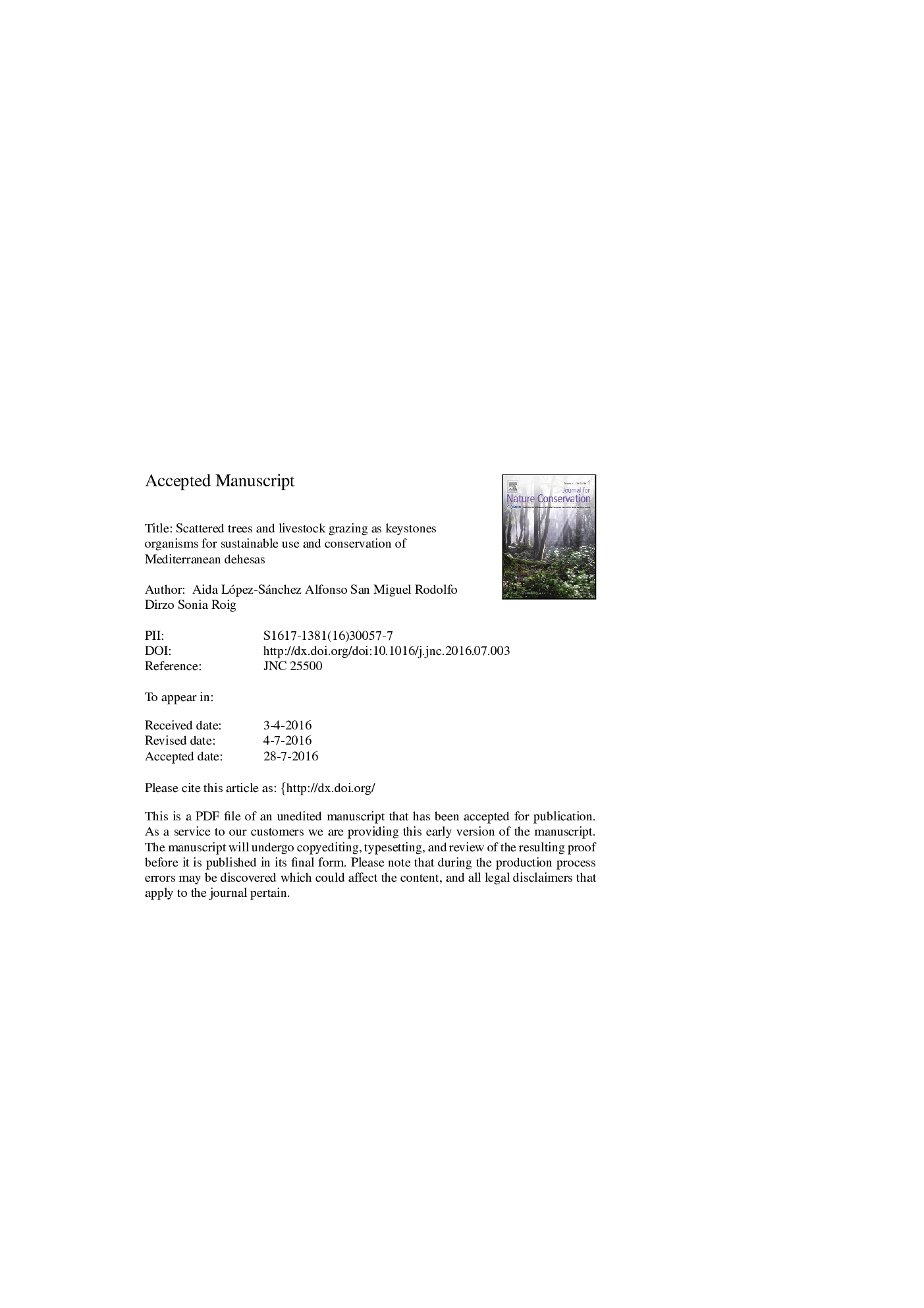| کد مقاله | کد نشریه | سال انتشار | مقاله انگلیسی | نسخه تمام متن |
|---|---|---|---|---|
| 6305425 | 1618535 | 2016 | 38 صفحه PDF | دانلود رایگان |
عنوان انگلیسی مقاله ISI
Scattered trees and livestock grazing as keystones organisms for sustainable use and conservation of Mediterranean dehesas
ترجمه فارسی عنوان
درختان پراکنده و حیوانات حیوانی به عنوان ارگانیسم های اساسی برای استفاده پایدار و حفاظت از دژهای مدیترانه استفاده می شود
دانلود مقاله + سفارش ترجمه
دانلود مقاله ISI انگلیسی
رایگان برای ایرانیان
کلمات کلیدی
اکوتون گاو گونه، فاصله بین درختان، تعامل بین دام ها و دام ها، زیست توده، تنوع گیاهی،
موضوعات مرتبط
مهندسی و علوم پایه
علوم زمین و سیارات
علوم زمین و سیاره ای (عمومی)
چکیده انگلیسی
Mediterranean scattered oak woodlands support relatively high biological diversity, and provide important ecosystem services. However, there is still a lack of knowledge about livestock-tree-grassland relationships, knowledge necessary for effective conservation management in these systems. To address such lacuna, we measured the effects of scattered trees and grazing animals (livestock vs. wild ungulates, mostly deer) on biomass and diversity (and their relationship) of the herbaceous layer (understory) of open holm oak woodland (known as dehesa) in Central Spain, for two years. We located two 1-ha plots within three different grazing management schemes (cattle, sheep and wildlife only). Within each plot, we randomly selected four focal trees from which a subplot was established in two directions and three distances. In each subplot, we measured plant diversity and biomass, along with microclimatic variables across sites. We found rainfall variability affected herbaceous biomass and diversity in the dehesa system, and the effects were nuanced: in a dry year (<300 mm annual rainfall) the presence of livestock grazing correlated with higher herbaceous biomass (14%), and in moister year (>600 mm annual rainfall) the effect was enhanced, as plots under livestock grazing exhibited even higher herbaceous biomass (42%). In addition, livestock, particularly cattle, generated a more diverse community (52 species mâ2). Microsites created by trees generated high plant diversity among herbaceous communities, where alpha diversity was higher (20%) in ecotone and inter-tree gaps than under the canopies. In addition, species turnover was higher than 50% in all cases. Biomass was higher (15%) under the canopies only under humid conditions. Legume dry matter was positively related to plant diversity. We concluded that agroforestry management practices such as promoting tree development through silvicultural techniques to create different microsites, and maintaining livestock grazing are needed to preserve these emblematic ecosystems.
ناشر
Database: Elsevier - ScienceDirect (ساینس دایرکت)
Journal: Journal for Nature Conservation - Volume 33, September 2016, Pages 58-67
Journal: Journal for Nature Conservation - Volume 33, September 2016, Pages 58-67
نویسندگان
Aida López-Sánchez, Alfonso San Miguel, Rodolfo Dirzo, Sonia Roig,
